While You Were Doomscrolling, This B’luru Guy Built a 500-Plant Jungle In His Home After Work
A fossil. 500 plants. And an aquarium with 10 shrimp and three fish.
Syed Alfatah Manzoor’s Bengaluru home is an aesthetic argument for how much an apartment in a metropolis can house. His 300 sq ft home is a moodboard of sorts, with plants decking every corner. As Syed takes us on a virtual tour of the home, he explains his green endeavours. Gardening is intuitive. He shares, “I’ve been living in Bengaluru since 2009. As a child, I loved plants; my father would bring back seeds from the market, and I would plant them. Cucumbers were my favourite.” It was during the COVID pandemic-induced lockdown that Syed revisited this passion. “Around June of 2020, I started building a plant space in my house. I kept adding plants to it; it was a very natural process.”
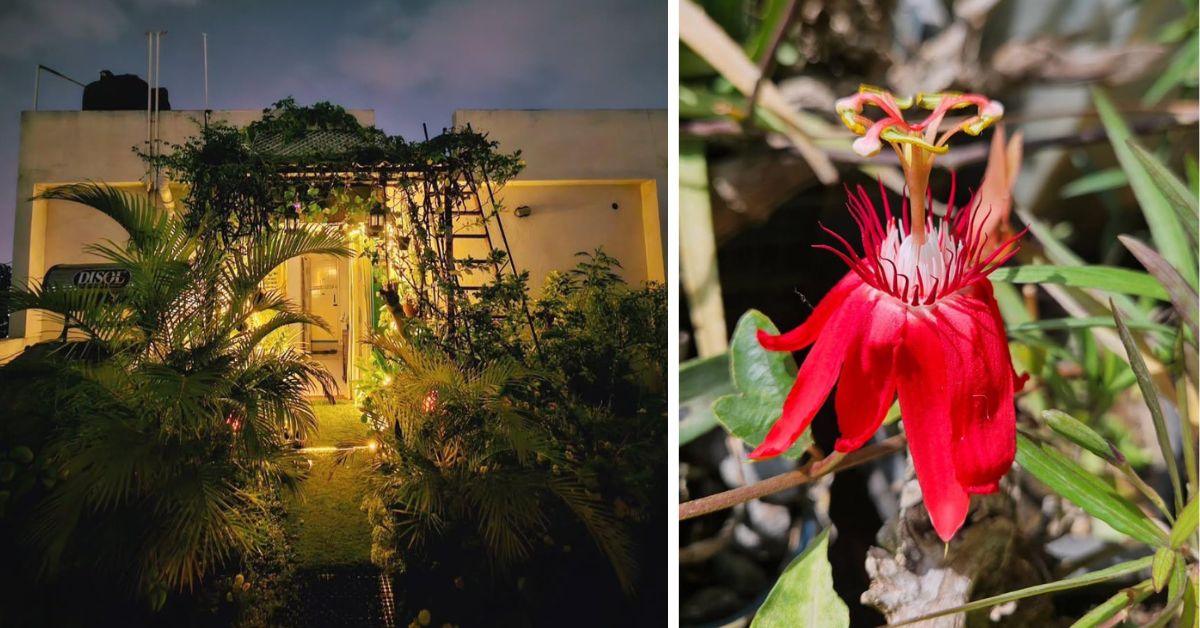 Syed’s home in Bengaluru is a green paradise; his garden is filled with some unique plants like the Passiflora (R)
Syed’s home in Bengaluru is a green paradise; his garden is filled with some unique plants like the Passiflora (R)
Today, his garden features an eclectic mix of 500 plants.
Is it possible to start a home garden in a metropolitan city like Bengaluru?
Syed’s garden nods.
All you need, he says, is some faith and good manure.
He spotlights four crucial steps to ensure your garden is healthy.
The secret sauce (soil)
Emphasising that people with home gardens need to pay careful attention to the soil, Syed says he relies on vermicompost. The worm castings enhance soil structure, while improving their nutrient availability, and promoting plant growth. In addition to this, vermicompost ensures a more porous and well-aerated soil, thereby helping the soil hold moisture and reducing the need for frequent watering.
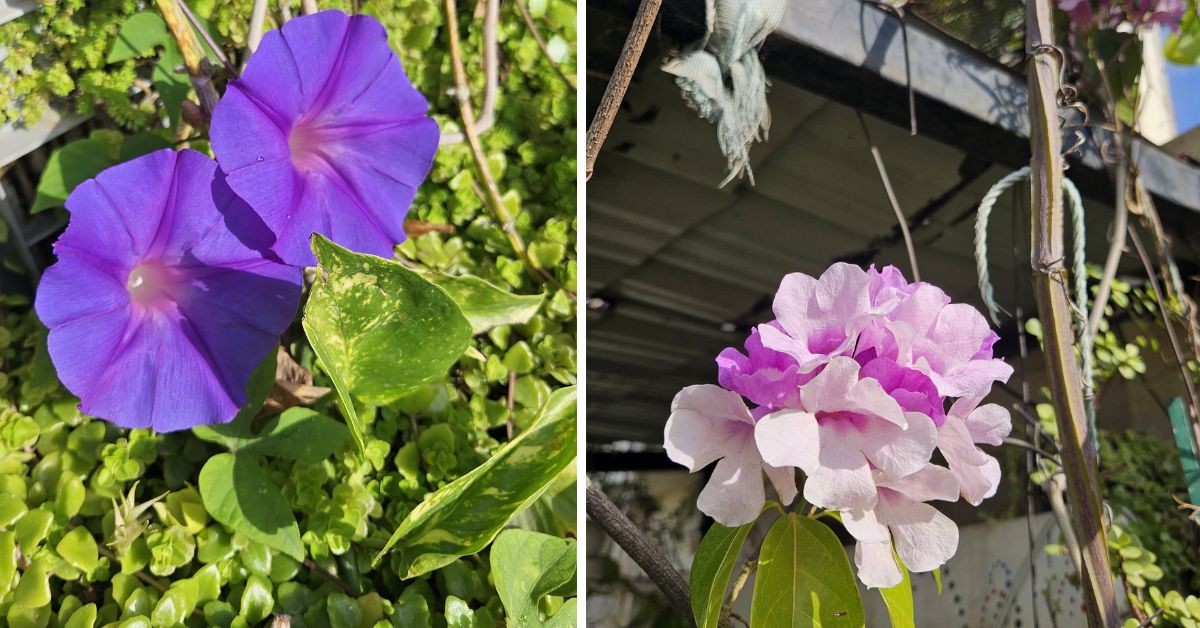 Flowers like Morning Glory (L) and Garlic Vine (R) fill Syed’s Bengaluru home
Flowers like Morning Glory (L) and Garlic Vine (R) fill Syed’s Bengaluru home
Choose plants that will weather the weather
For any youth attempting to start their gardening journey, the time constraint is a must to factor in. Growing a garden that needs little care, one that is guided by the rhythms of nature, is the key, Syed notes. While narrowing down on the species of plants you’d like to include in the garden, he suggests ones that are “rough and tough” in nature.
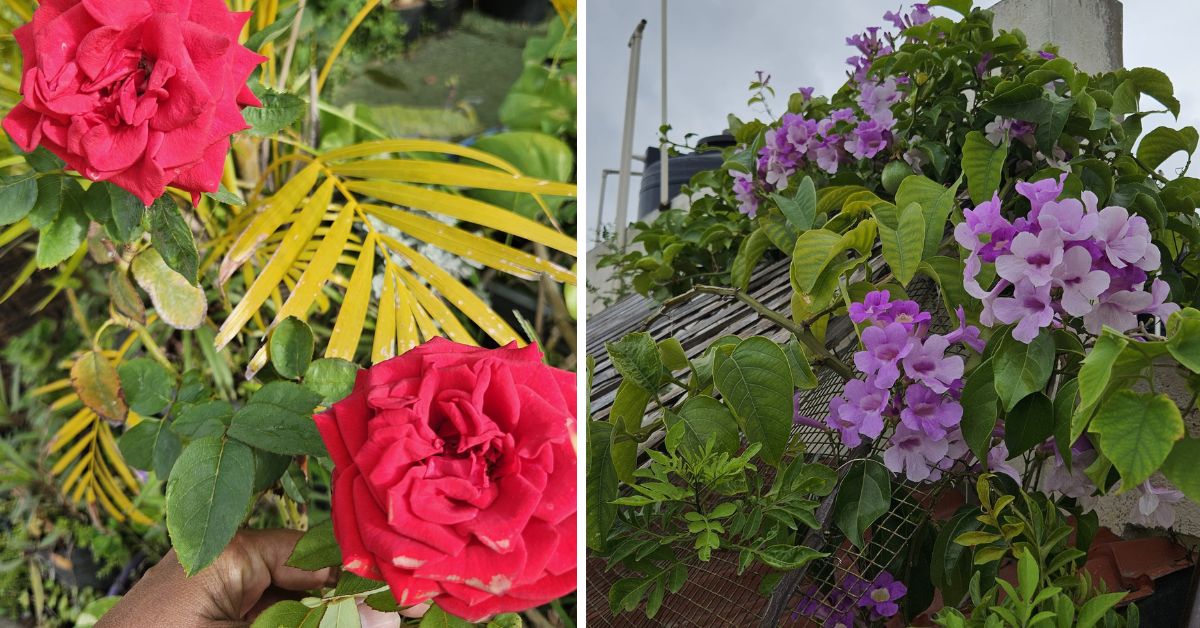 Good soil and vermicompost are of utmost importance to have a home garden thrive
Good soil and vermicompost are of utmost importance to have a home garden thrive
An article titled ‘20 Impossible to Kill Outdoor Plants’ shone the spotlight on chives, sedum, geraniums, herbs, and agave, as well as herbs like sage, rosemary, and thyme as the ones that don’t need much maintenance. Syed agrees.
His home garden is festooned in colours of purples, oranges, reds and greens, featuring flowering plants such as jasmine, hibiscus, hydrangeas, bleeding heart, dahlias; a dozen herbal plants like tulsi (holy basil), rosemary, hibiscus, lemon grass; exotics like passion fruit; vegetable plants such as lettuce, cucumber.
Dealing with pests
“In every garden, you will have sensitive plants. But finding a good pest repellent is the key,” Syed points out. His quick fix to preempt a pest attack is neem oil. he shares. A ‘ninja warrior’ is how most experts would describe neem when it comes to the role it plays in the garden. A fabulous weed-killer, neem also contains growth regulators like gibberellins and cytokinins that stimulate plant growth.
In addition to being safe, neem oil works as a soil conditioner and promotes plant health.
Knowing how much (water) is too much
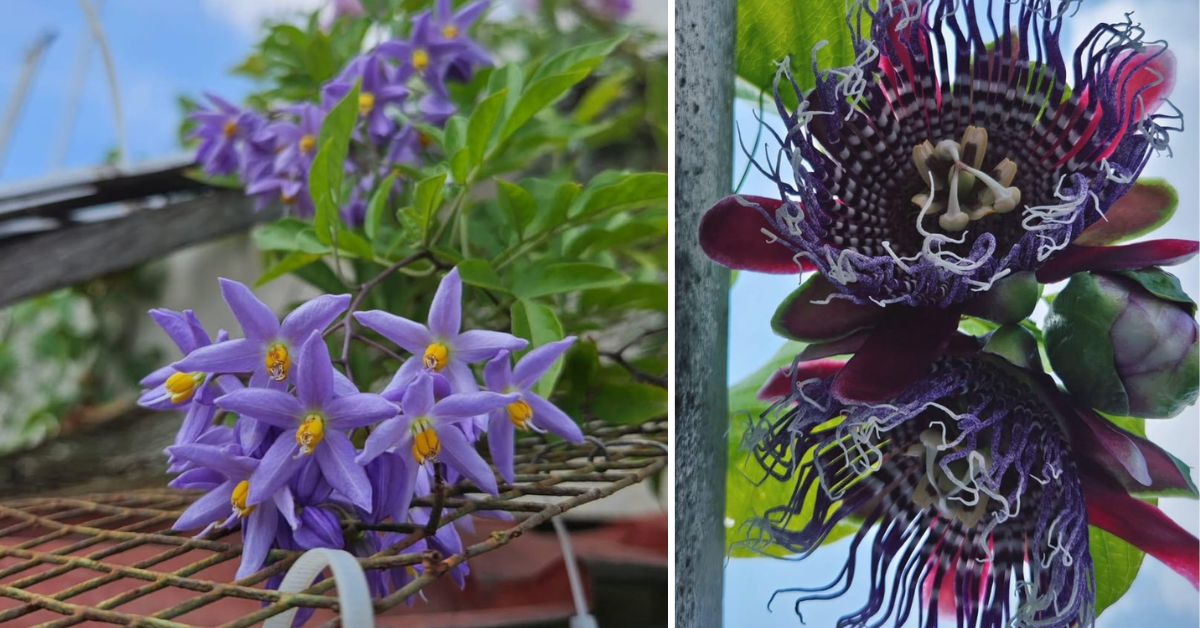 Syed’s home garden is coloured with plants like the Brazilian Nightshade (L) and the Passion Fruit plant (R)
Syed’s home garden is coloured with plants like the Brazilian Nightshade (L) and the Passion Fruit plant (R)
For most people in Bengaluru, maintaining a home garden proves to be cumbersome when you account for the unseasonal rains. But Syed wields this to his advantage. “Bengaluru’s unseasonal rain is a plus. In the rainy season, I don’t water the plants for a month. In summer, I water them around twice a day,” he explains.
Connect with your plant
Underscoring the most important secret to maintaining a home garden, Syed says it’s listening to it — in the literal sense, Syed says. “People who wish to start a home garden need to have a connect with a plant. They have to spend some time with it every day.” Instead of a mechanical schedule, Syed credits these hours for letting you in on your plant’s needs. “Sometimes I realise that a plant needs water; other times I see that it’s getting wilted,” he shares.
This quality time proves useful. “Especially after I’m back from a trip, I find most of my plants low on energy. Plants can feel the energy of the person who is taking care of them. You can’t just grow and keep them. They won’t be okay,” he shares.
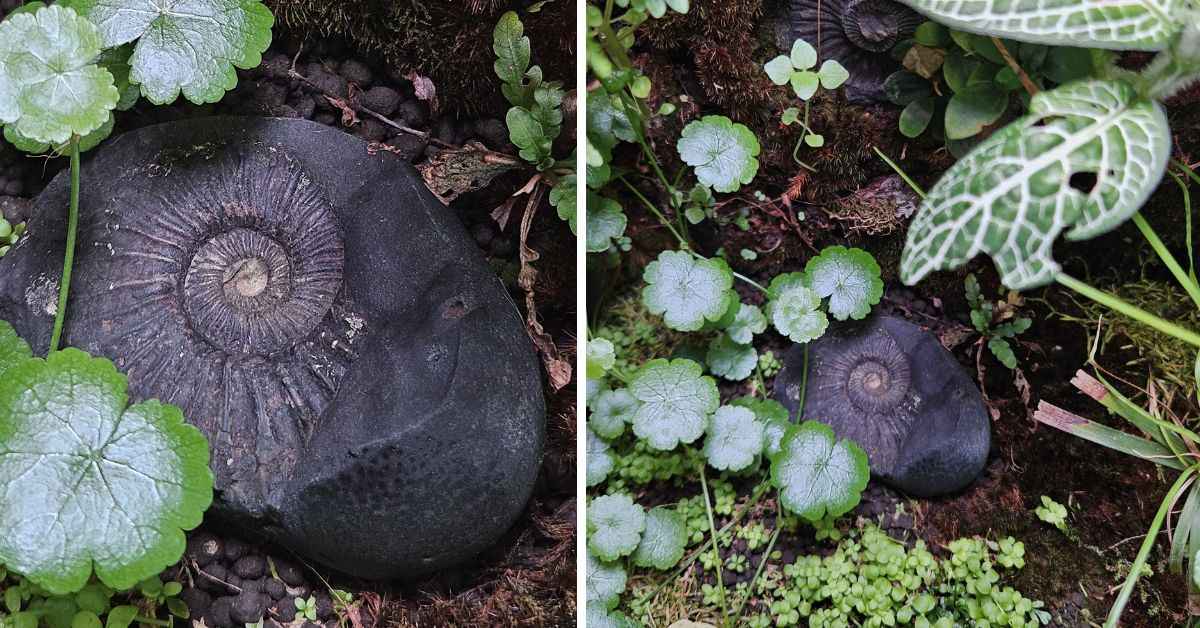 Syed’s home garden features a 60-million-year-old fossil ammonite
Syed’s home garden features a 60-million-year-old fossil ammonite
While Syed’s garden is a humdinger of a spot, there’s a fascinating piece of history inside the home. He points to a 60-million-year-old fossil. “I had gone to Nepal’s Kali Gandaki River for a trek. I brought back an ammonite stone,” he shares. The swirling shell-shaped black fossil stone, distinguished by disc markings, has mythological significance. It’s one of his prized possessions.
In its own ingenious way, Syed’s home in Bengaluru is a model for any youth who wants to turn their space into a sustainable one.
All pictures courtesy Syed
Sources
News